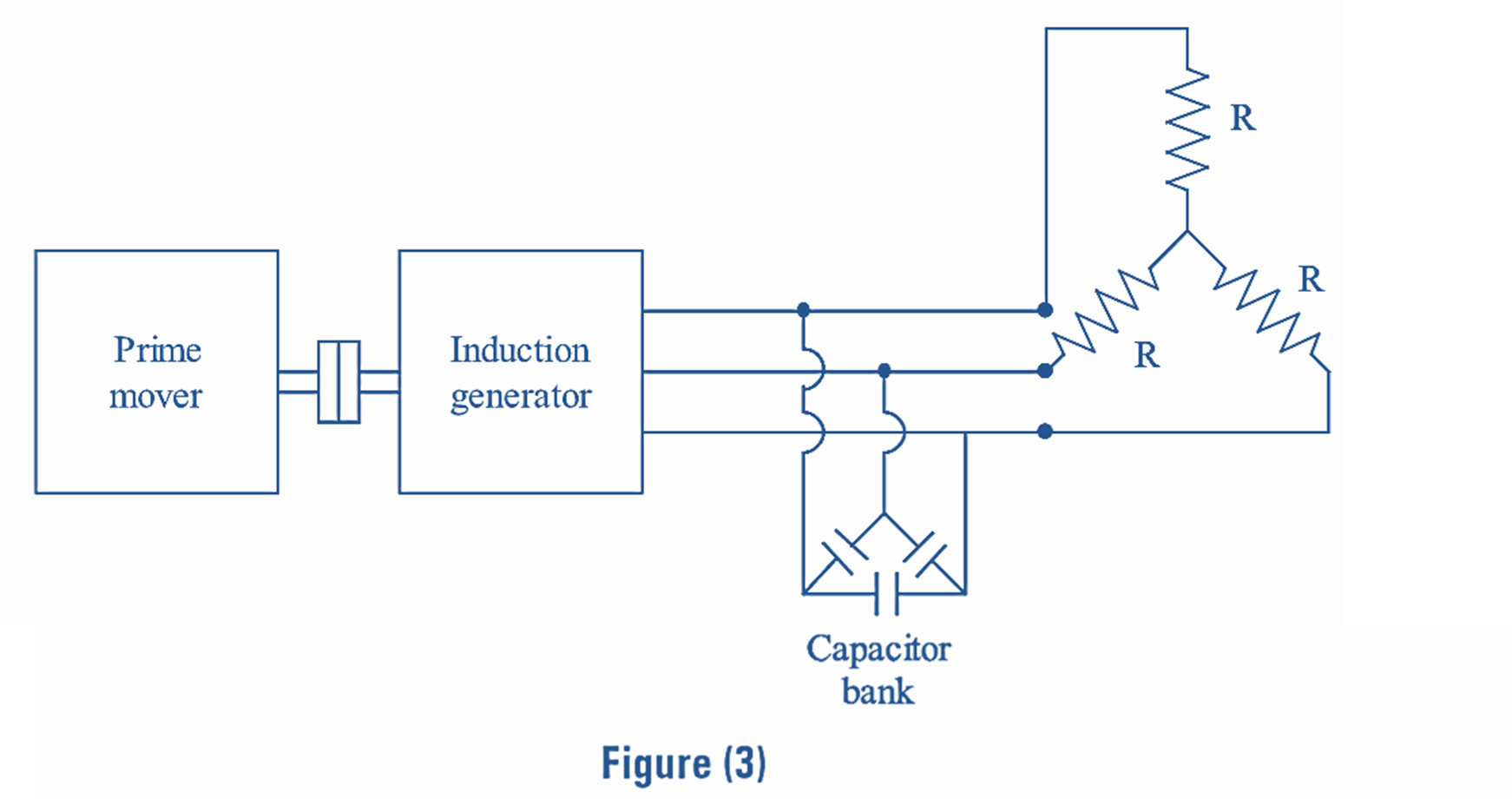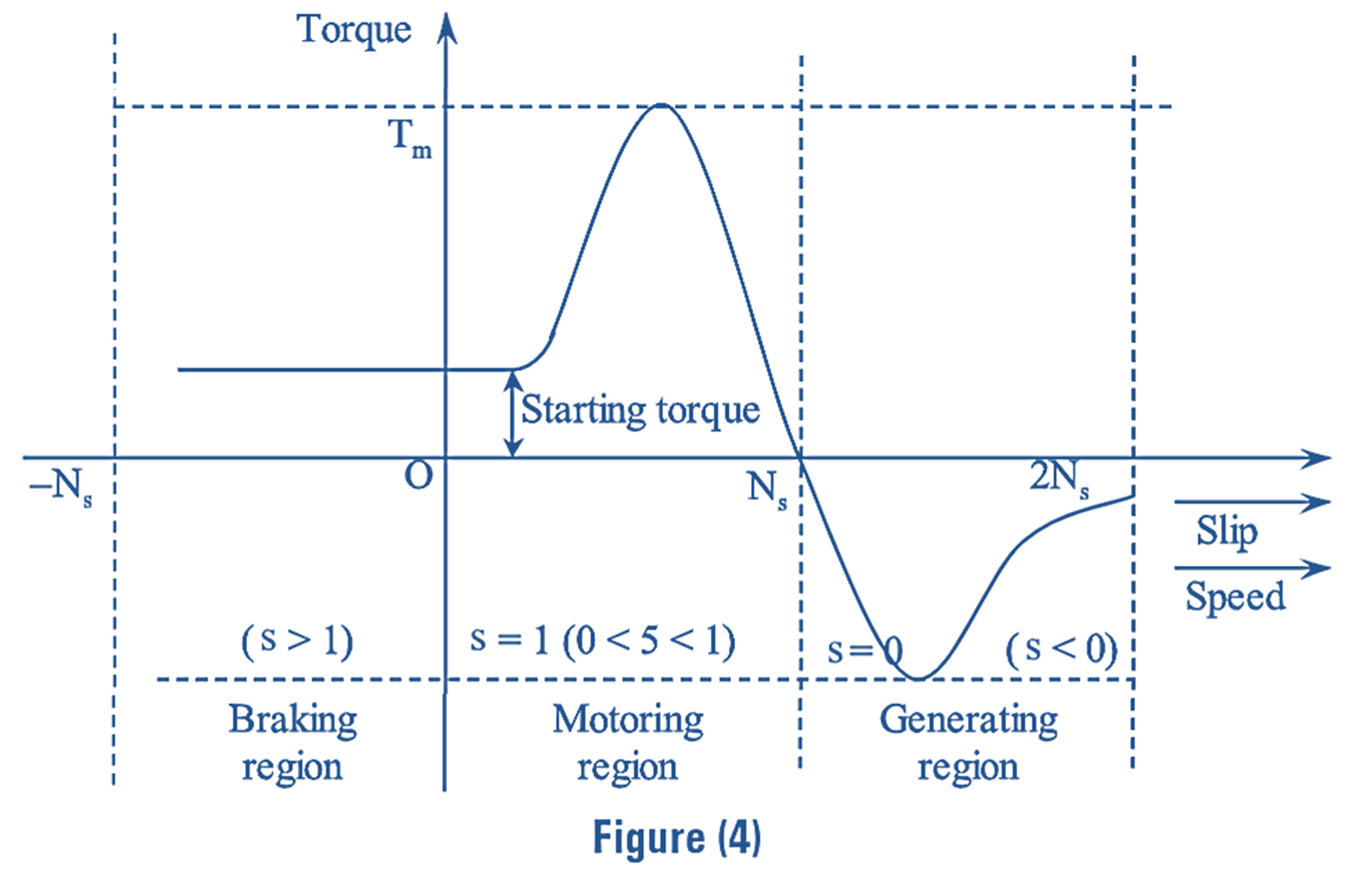When the slip of induction motor is negative i.e. , when the induction motor runs at a speed greater than synchronous speed, the induction motor runs as a generator called induction generator.
Working of Induction Generator
When a 3-ϕ induction motor is given A.C supply and is mechanically coupled to a prime mover then it acts as a synchronous generator if it is driven at a speed greater than its synchronous speed. The function of induction generator is to convert mechanical energy from the prime mover to electrical energy which is received through stator.


The operation of induction motor as induction generator can be better explained using figures (1), (2) and (3). Figure (1) represents the motoring action of an induction motor and when same motor is driven by a prime mover with its speed higher than it synchronous speed then its generating action i.e., of induction generator is shown in figure (2). Initially, in figure (1), the direction of torque and rotation are for motoring operation where the running speed is less than the synchronous speed and hence the slip (Ns – N) is positive but when the same machine is operated as induction generator, the machine is now made to run at super synchronous speed i.e., above synchronous speed and the slip for this action becomes negative. Also, the direction of torque will now be in the opposite direction i.e., in induction motor when the speed is increased above its synchronous speed with the help of prime mover. Now, the rotor rotates faster than the rotating magnetic field and the rotor conductor cuts the main magnetic field in opposite direction to that of motor rotation due to which the current and e.m.fs in the rotor will be in reverse direction and the machine acts as an induction generator.
Induction generator does not contain a field circuit and hence it is not self-exciting. But a magnetizing current is always required to be supplied to the stator winding even for motor action and also for generator action for the production of rotating magnetic field. Therefore, it becomes necessary to operate induction generator along with any other generator in parallel which can supply the exciting current of fixed frequency to it for the production of rotating magnetic field.
In induction motor at the instant when the motor speed becomes greater than the synchronous speed, the motor starts delivering active power to the 3-phase line. The power developed will be negative. In order to develop its own rotor magnetic field, it starts absorbing reactive power from the line. Hence, it requires some source of energy to supply reactive power. This reactive power is supplied by means of static capacitor connected in parallel as shown in figure (3).

For both the motoring and generating actions, torque slip characteristics are as shown in figure (4). From the construction point of view, both the machines are similar. The main difference is in the direction of rotation of rotor i.e., both are opposite to each other and the equivalent circuit for induction motor also holds good for induction generator for the slip s introduced with negative sign.
Advantages of Double Cage Induction Motor
- The generator need not be synchronized.
- It is suitable for higher speeds.
- When an induction generator is short circuited, a small amount of power will be delivered to load since the excitation is quickly reduced to zero.
- The construction of an induction generator is robust, requiring less maintenance.
- There is no problem of hunting or drop out of synchronism.
Disadvantages of Double Cage Induction Motor
- The major disadvantage of an induction generator is that it is difficult to operate alone as a standby or emergency generator.
- It has very low power factor.
- Since, it can generate only leading currents, an additional synchronous apparatus with huge KVA capacity is required to deliver the total quadrature lagging currents.
- The efficiency of an induction generator is poor.